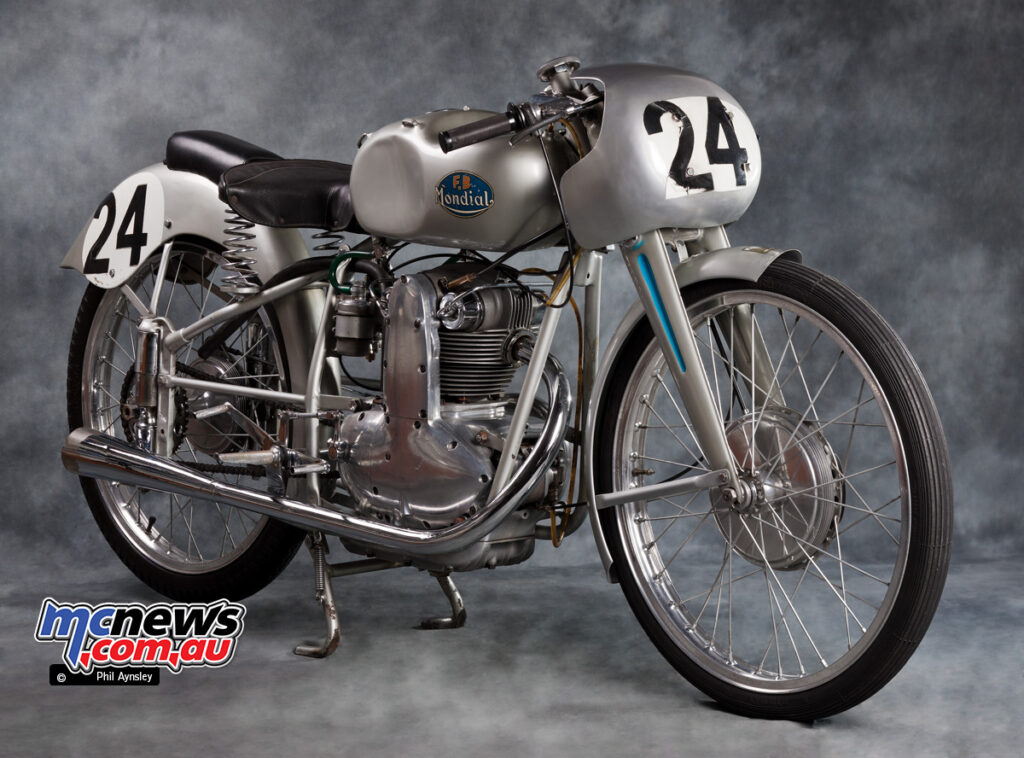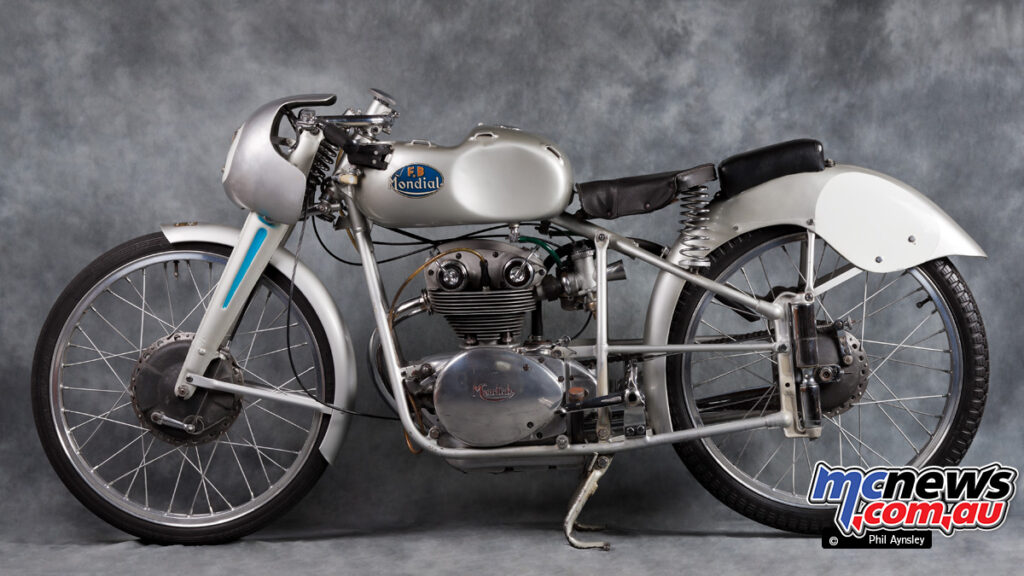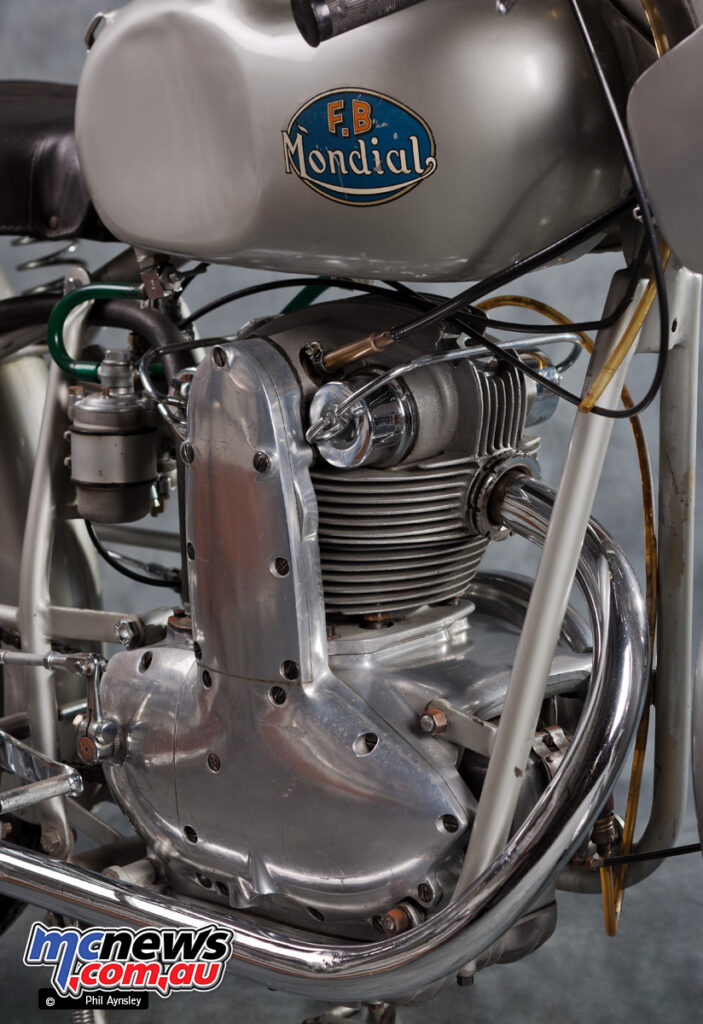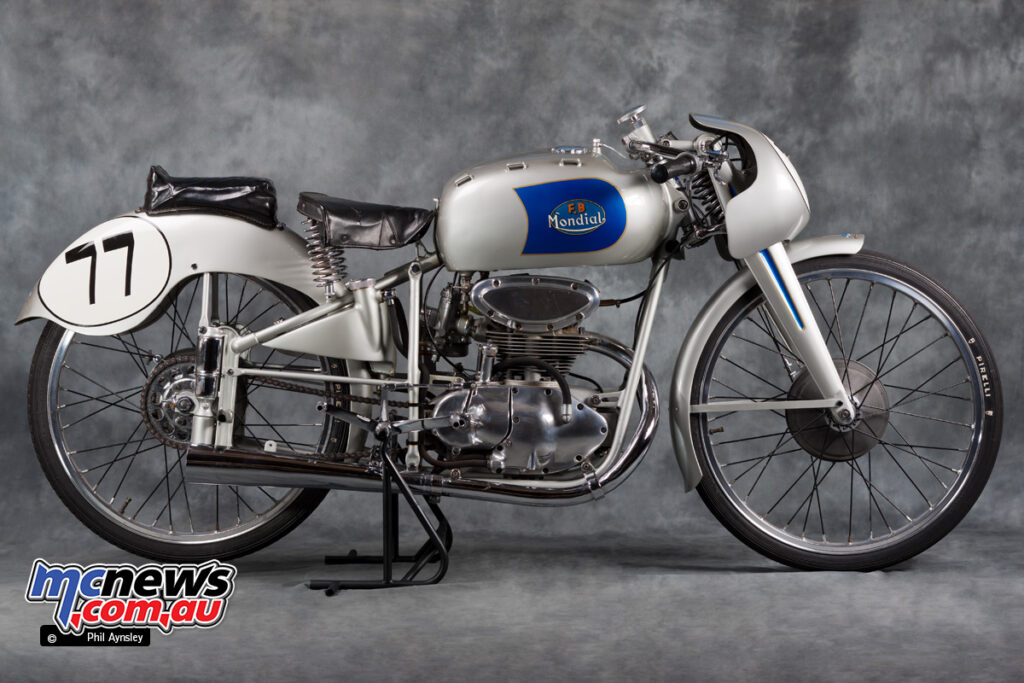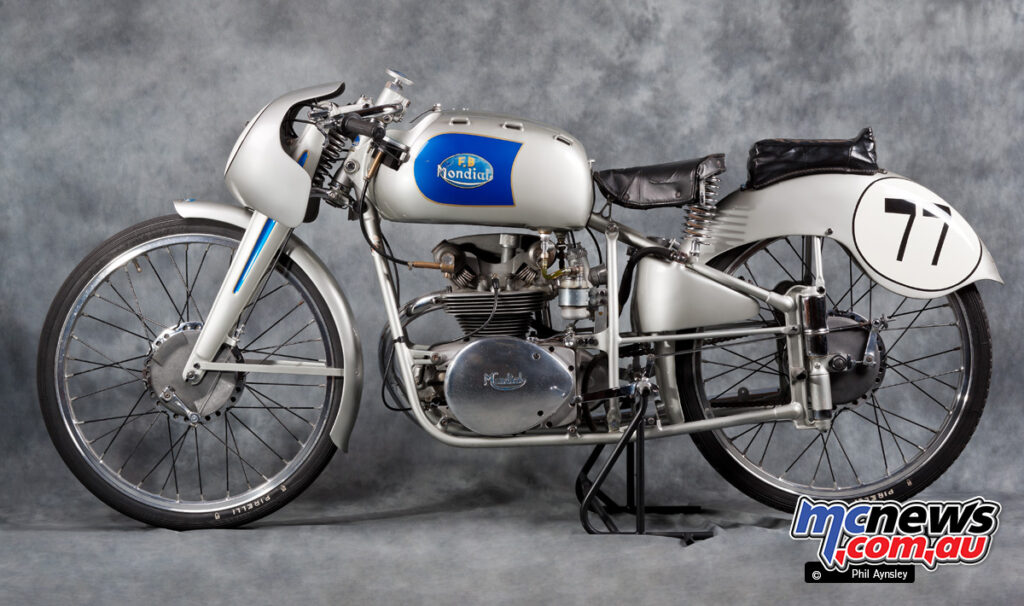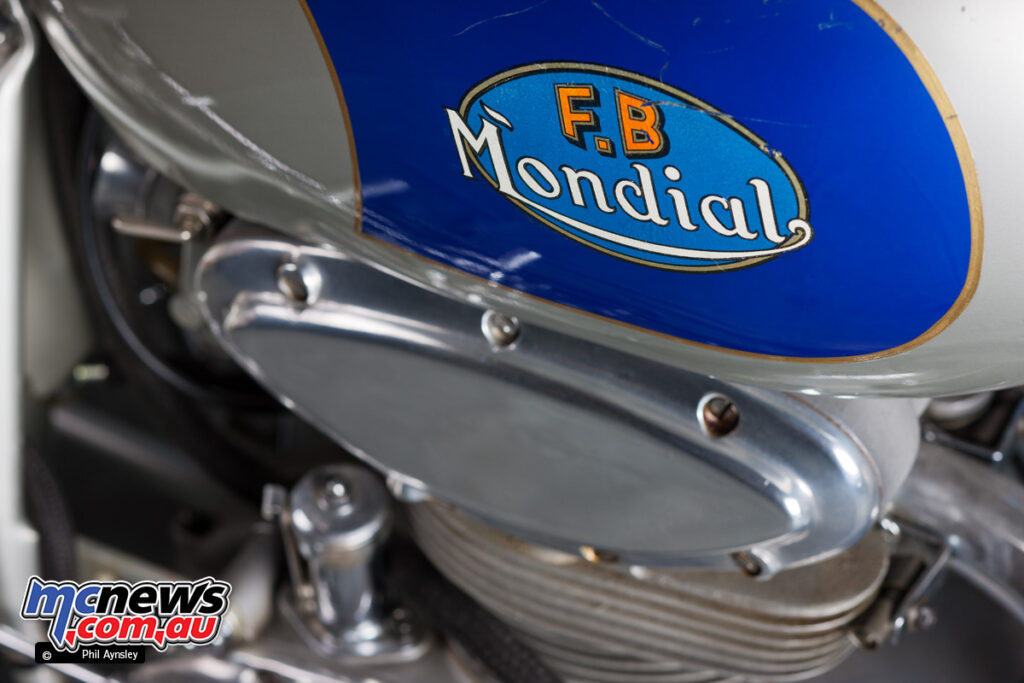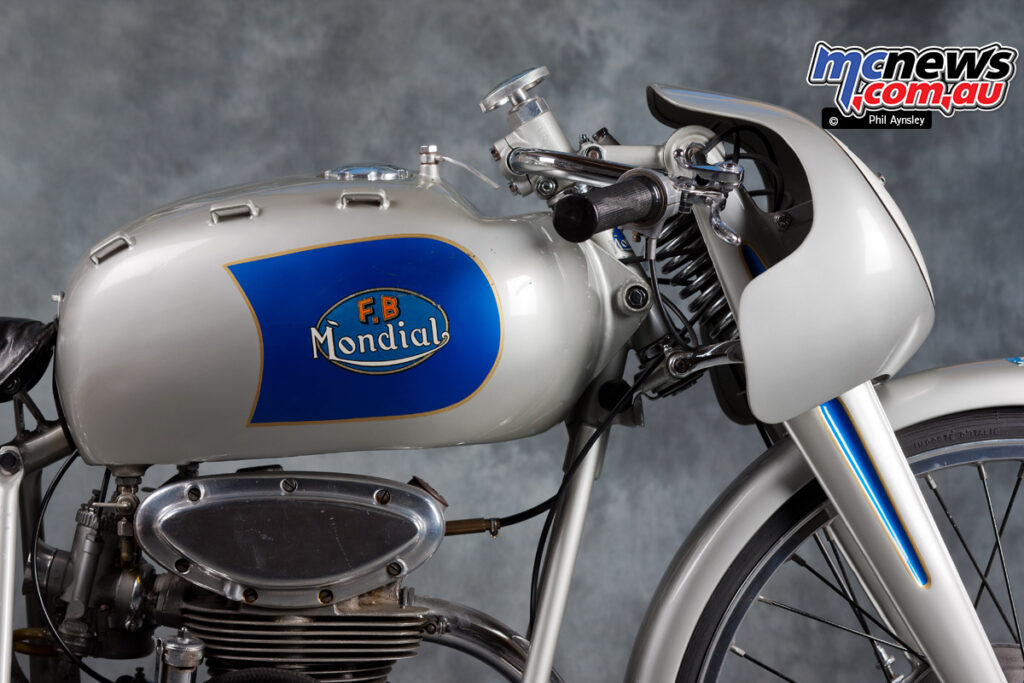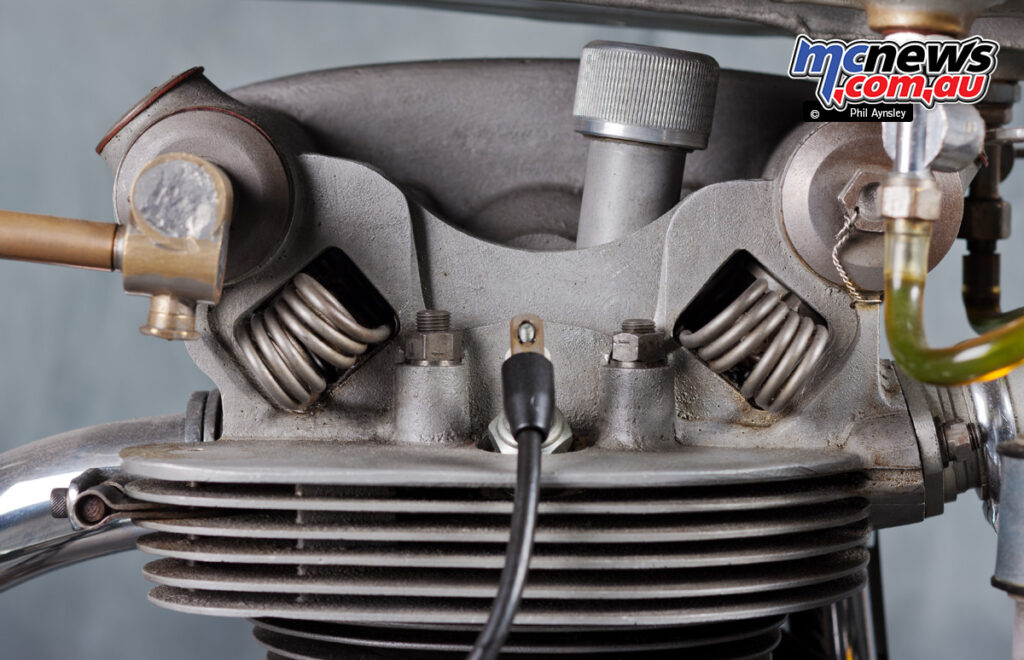F.B. Mondial 200E
With Phil Aynsley
F.B. Mondial was founded by Giuseppe Boselli in 1948 purely to make racing motorcycles. It succeeded brilliantly winning every race of the 1949, 1950 and 1951 125cc World Championships!
The early success resulted in public demand for road bikes so in late 1949 the company’s first production street bike was displayed, the 125 Turismo.
Designer Alfonso Drusiani made sure the bike’s appearance echoed that of the race bikes with a silver and blue paint scheme and a similar motor bottom end, although the barrel and head were very different.
In 1951 a 200cc model was released. It employed a similar blade front forks and plunger rear suspension to the 125 models which had expanded to include Sport and Super Sport versions, as well as the same style tank and bodywork.
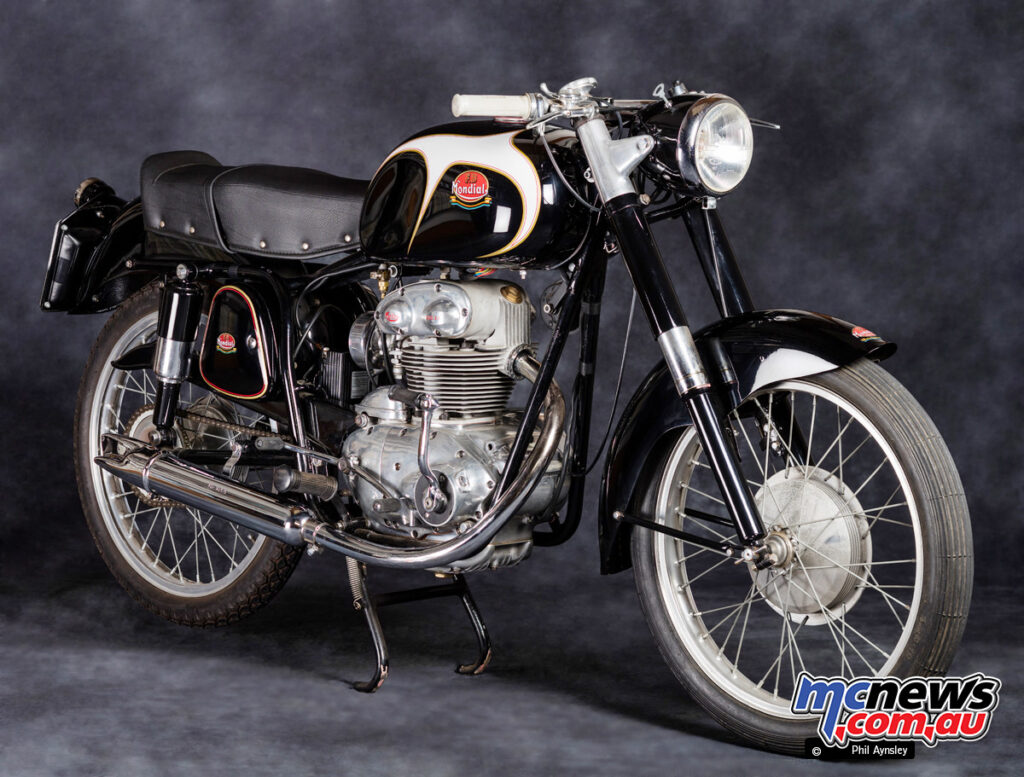
The new motor used an enlarged version of the 125’s bottom end with the biggest changes (apart from the capacity) being the barrel and head. Two rounded protuberances on the head covers suggested that this was a DOHC design. However they were purely cosmetic and the motor was in fact a simple OHV design.
For 1953 the 200 received telescopic front forks and a swing arm rear suspension and was available in both Turismo and Sport versions.
1955 saw the 200 referred to as the Extra Lusso – a name Mondial used for their sport touring models. The bike seen here is a 1955 model. It had been restored in Italy prior the the current owner purchasing it but the white tank striping is an incorrect shape and should be confined to the rear of the tank only.
Output was 12 hp and top speed reached 110 km/h.
200 production ceased in 1957. However the following year a handful (perhaps only two) of prototypes were built of a 200 Comfort model. These were designed with the American market in mind but did not proceed to production.
The motors appear to be bored out 175 ST (which had entered production in ’57) units rather than the old 200 unit. That makes the original and unrestored bike I photographed a very rare bike indeed!
Source: MCNews.com.au

